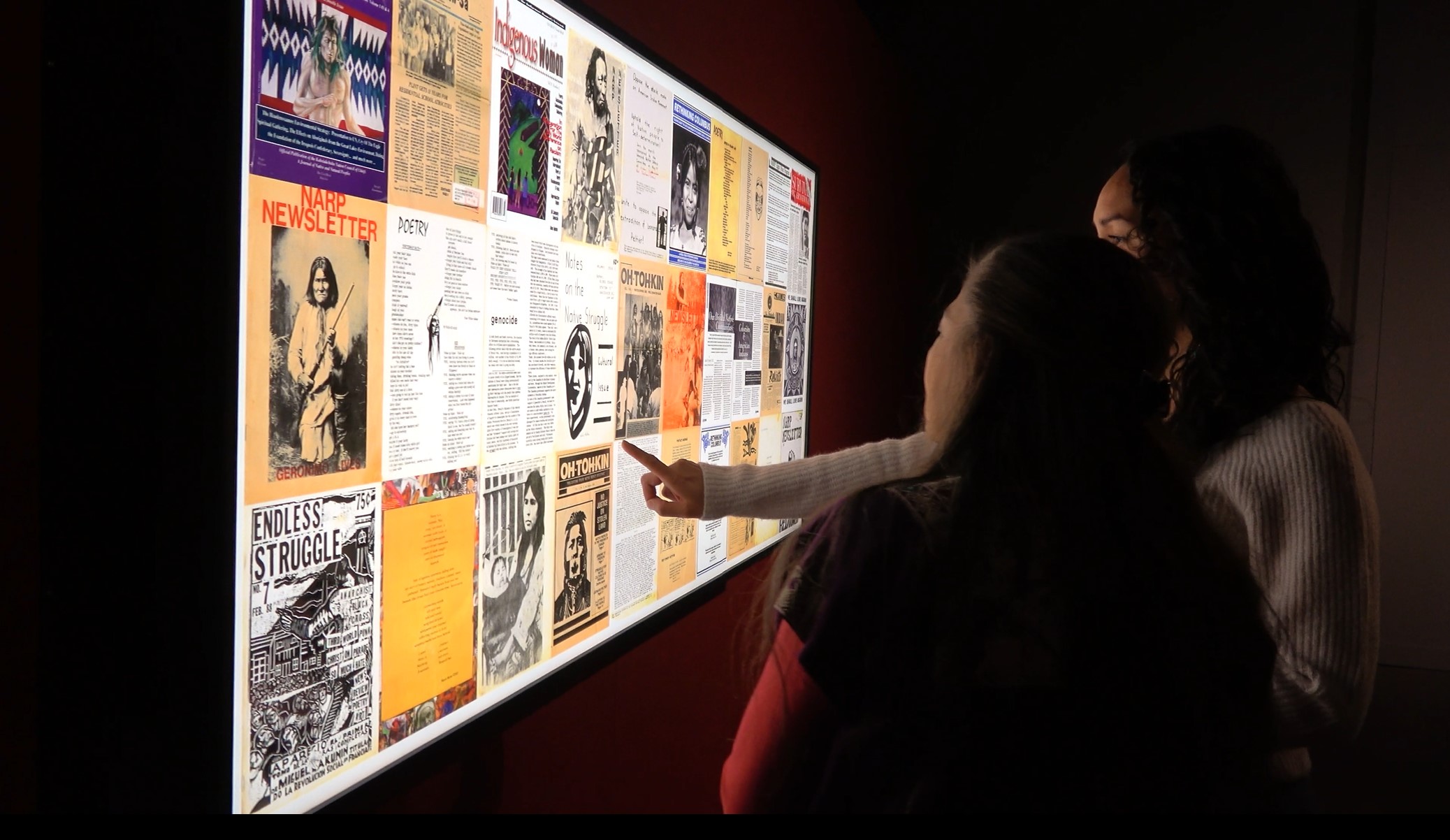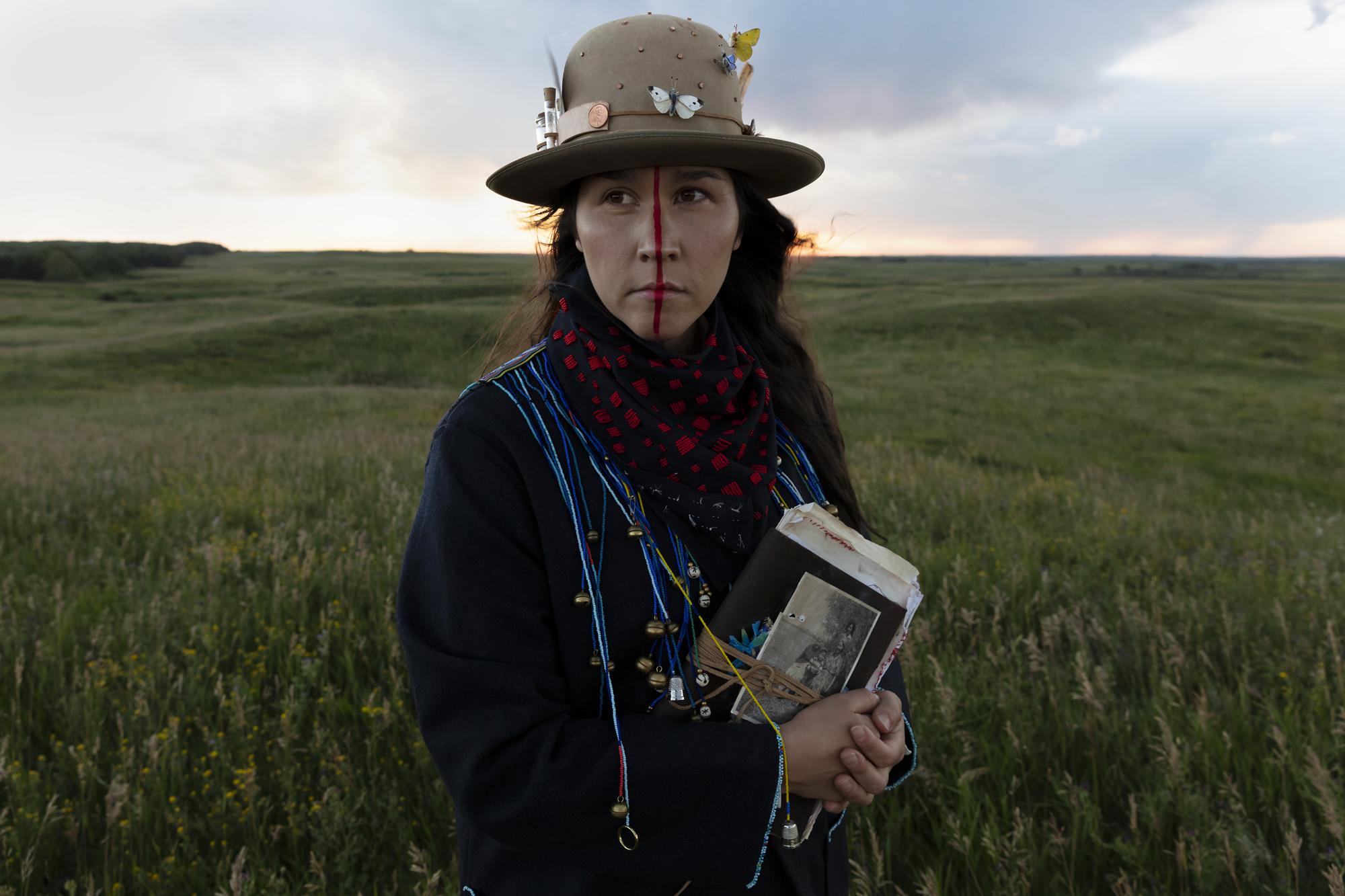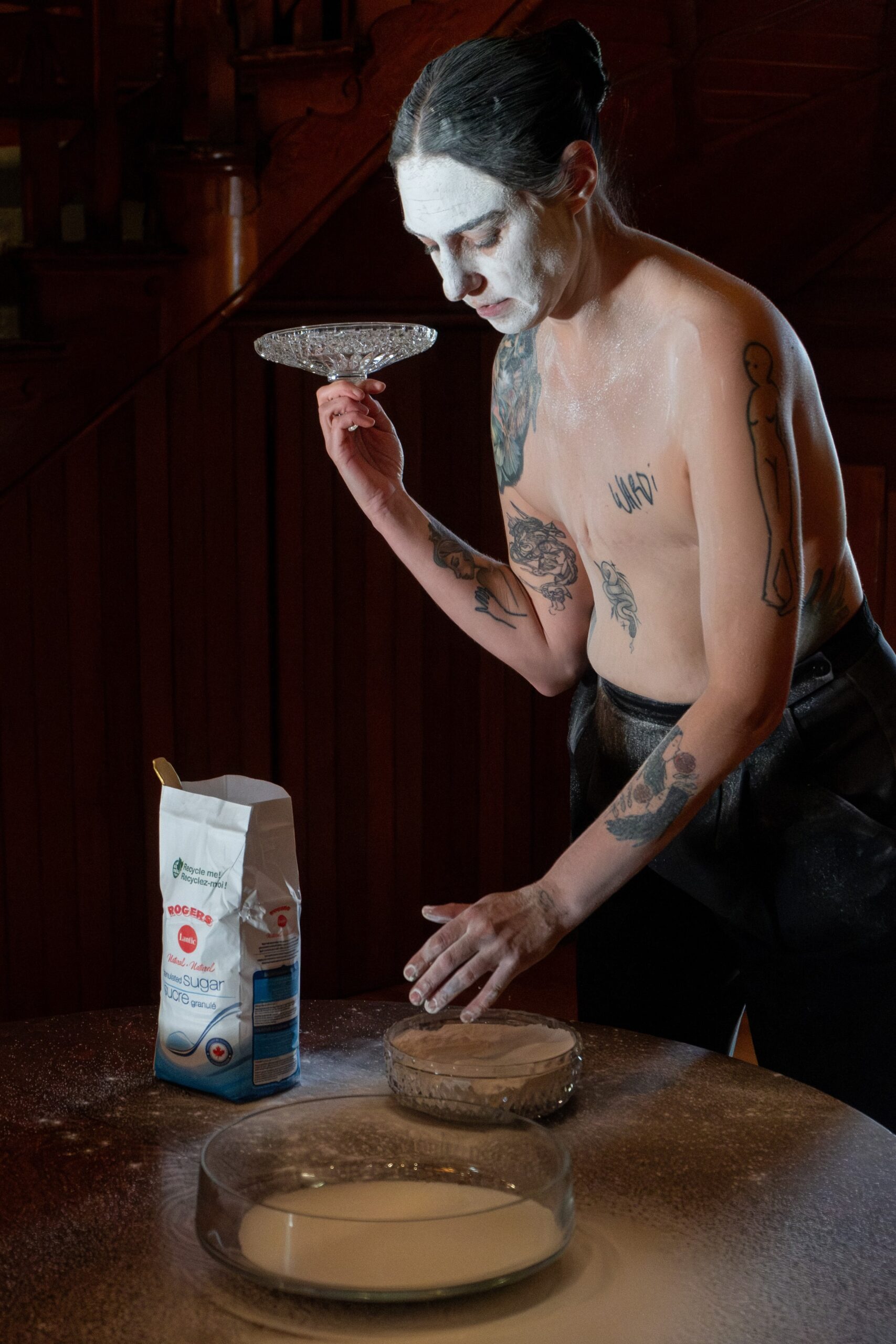By Curators of Woven In: Indigenous Women’s Activism and Media, Marianne Nicolson, Gerry Ambers and Siku Allooloo
Marianne Nicolson, Gerry Ambers and Siku Allooloo share a glimpse into the layers of conversations that unfolded throughout the exhibition, Woven In: Indigenous Women’s Activism and Media. These conversations below include the words of artists and activists Tania Willard, and Carmen Guerrero:
Gerry: A lot of the movement was a grassroots movement. It was a movement by the people in our communities and in the cities, and the artists played a very big role in helping. By creating newsletter, doing the artwork for the newsletters, creating t-shirts to fundraise, creating beadwork to sell to keep the movement going forward. A way of conveying what was important to keep the movement and the resistance very much alive was through the vehicle of newsletters. Their pages are full of art work and poetry and different expressions of art.
Marianne, during the opening event: I really want to thank Gerry in particular in this process, you know, for many, many years we’ve been really fighting and advocating for our rights as Indigenous people. It was a number of years ago that I started talking with Gerry and realized she had this incredible depth of experience in this. She had lived through it, her entire life. I was in awe of it because I thought, how come we don’t know? How come we don’t know about these women who have spent their lives fighting for the rights of Indigenous people? I was honored to learn from her, you know, what had gone on before. One of the things I realized in talking to Gerry is that there has been a systemic shut down of that knowledge in the communities and in general society. The power of Indigenous women.
Gerry: In the sixties and seventies, we really worked inter-dependently. We all created this work together, and didn’t really document who did what. It was a collaborative event. I feel over the course of time, the voices of women have been eclipsed in the work that’s been done in various movements and activist work. Colonization is very patriarchal, so as colonization progresses, so will the intensification of patriarchy.
Siku and Carmen: I knew through the stories of my mother and the stories of Carmen that they lived this history. They lived the fight and the long term struggle of Indigenous resurgence and Indigenous rights and Indigenous justice. I was looking for them as a student, and in all my research in the archives there was nowhere that they could be found! I had to talk to people – I had to talk to the women I know to find this.
Siku and Carmen: At the time, Indígena had the most up to date and extensive reporting on Indigenous political movements in the globe and it circulated all across the Western Hemisphere. It was run by these brilliant, amazing women who had a long-range, vast, interconnected vision to interweave people from all nations, from all territories in a united struggle for Indigenous peoples, for life, for love of culture, love of our world, and to keep each other united and strong and focused. (edit: shortened)
Siku: One of the things that always stuck out to me in our conversations as we were planning this was Marianne said,” We’re not here to elevate our grassroots activism to the status of the gallery. We’re here to bring the gallery to the grassroots.
Tania: I also feel here that there’s such a power that’s grounded in love and the connection with family and relationality and family in all kinds of ways. To acknowledge all the different ways that our families operate. All the different gender and sexualities that we can encompass to make beautiful, loving communities and families, I really feel that power in that here.
Woven In: Indigenous Women’s Activism and Media ran from November 19, 2022 to May 7, 2023. Curated by Gerry Ambers, Marianne Nicolson and Siku Allooloo.
To learn more about this exhibition, visit our website.



